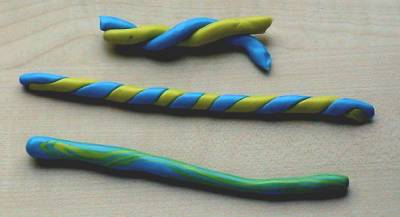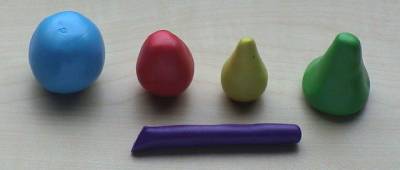

|
Itís necessary to make the
clay smooth and loose by kneading so that all air disappears from the clay and
the clay will become smooth using your body heat (do not place the clay on the
heating or in the sun, since that will cause the clay to become more granular).
Especially Fimo Classic stays granular. To make i.e. Fimo Classic easier to use you can add MixQuick. This is a special kneading medium (it looks like any white polymer clay), which does not affect the colour of your work piece. Itís not recommended to knead all of one colour at once, knead the clay in
two or more parts, it will be easier and quicker to mould. Make rolls of the
clay and braid them, roll again and repeat this. |
|
Mixing
You can of course mix all colours, Fimo and Creall-therm alike. By using other quantities you will obtain beautiful shades. Pastels Candy cane effect
Marble effect Polystyrene
foam Tin
foil Basic forms
|
|
Creasing and Folding
Library First try some simple forms, like I mentioned above. You will see that
the more you practice the more fun you get out of this marvellous hobby. After
this you will be able to experiment yourself. |

Copyright(c) 2003-2015 Fimodreams
/ Els Bleijenberg. All rights reserved.
Email Me /
www.hobbysite.info




















